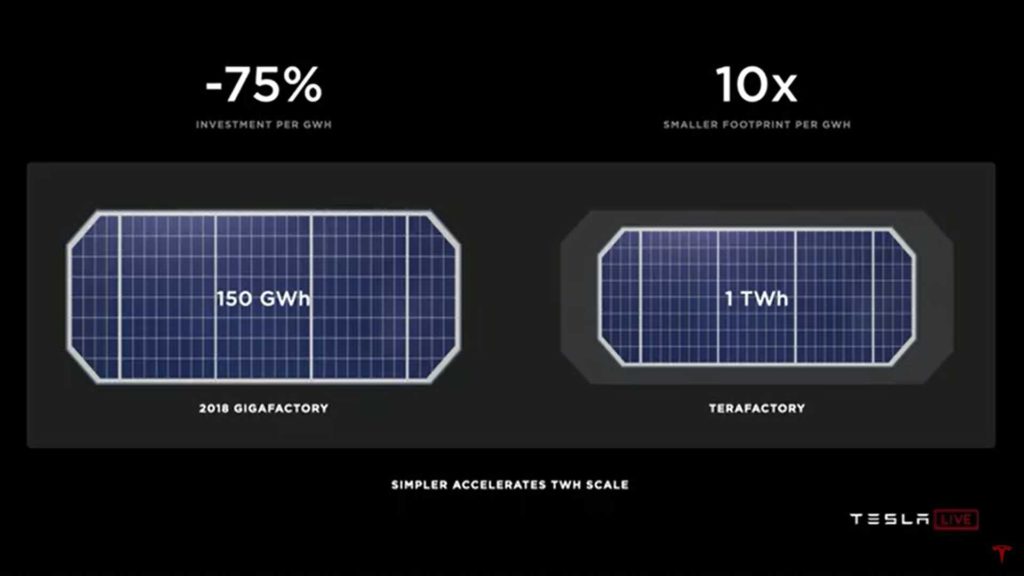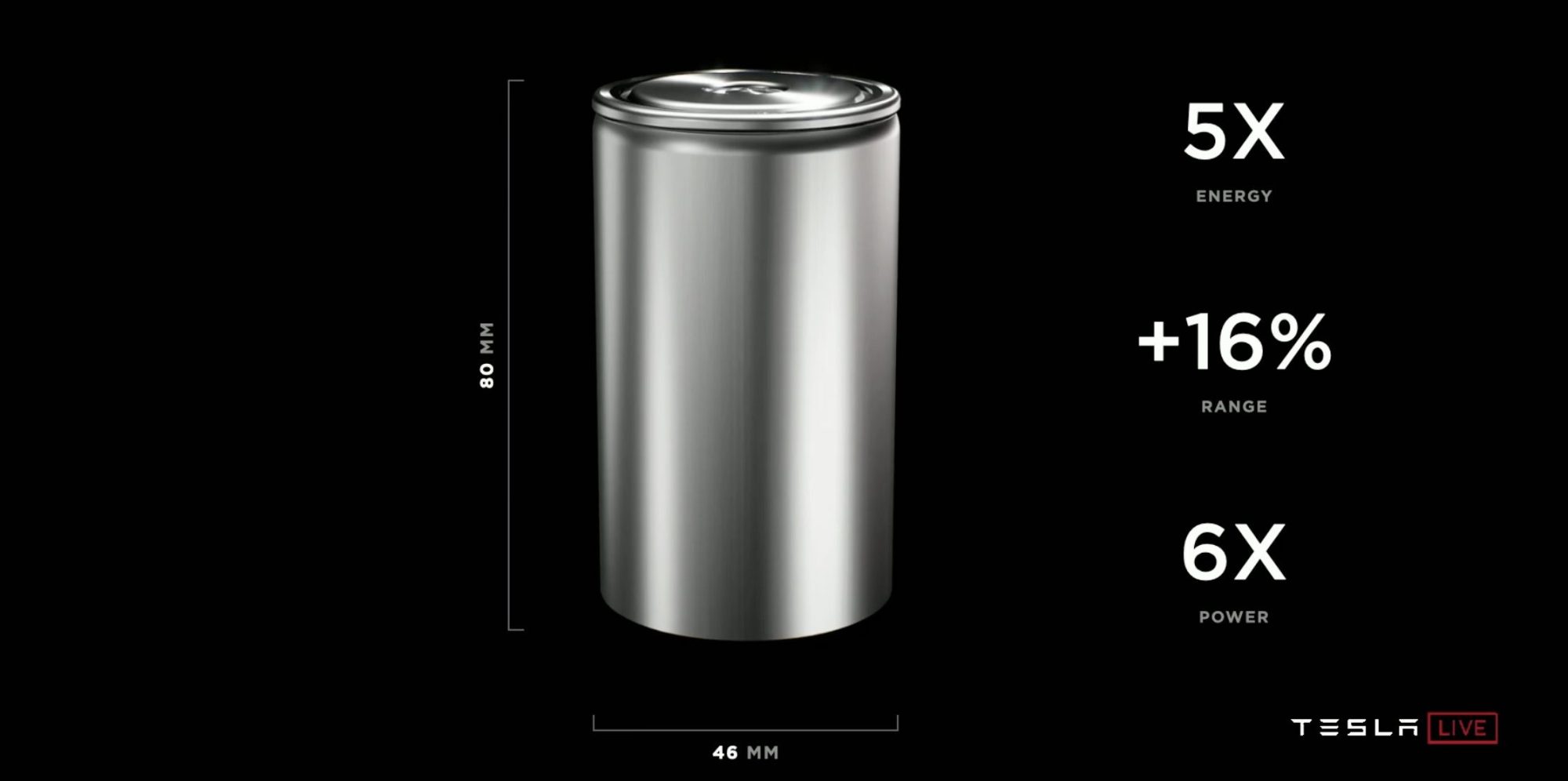After months of rumors and speculation, Tesla has finally presented its new self-developed cells: the 4680 (so-called because they are 46 millimeters in diameter and 80 millimeters high). In the past, Tesla has already made a similar change from the 18650 formats of the Model S and Model X to 2170 of the Model 3 and Model Y, which provided 50% more capacity.
They are moving from one type of cell to a larger one allowed Tesla to cut costs (for example, fewer housings are required) and improve space utilization. Now, after years studying the optimal size for its cells, the firm has presented the 4680, which have a capacity five times higher and six times more power.
According to the firm, the use of these new cells will increase the autonomy of its cars by 16% and reduce costs by 14%. All these improvements have been possible thanks to the optimization of the manufacturing processes and the batteries’ internal chemistry, among other things.
The new cells employ Tesla’s patented “tabless electrode” design earlier in the year. This solution, which eliminates the tabs used on the cathode and anode to connect to the housing terminals, helps reduce costs, simplifies cell production, improves performance, and reduces ohmic resistance since the Current does not have to go from the electrodes to the reed.
Tesla is already producing the 4680 cells at its Kato Road facility near Fremont. According to the company, within a year, this pilot plant will have already reached 10 GWh per year (we can compare this figure with that exhibited by Giga Nevada, which is currently around 54 GWh per year, the largest battery factory in the world.)

One of the most exciting aspects of the 4680 cells is that they will allow much faster and more efficient manufacturing. Described as “a highway instead of an urban highway with traffic lights and intersections,” each of the new production lines will be able to reach 20 GWh per year of capacity, an improvement of up to seven times over current processes.
What will this translate to? In addition to leading to a 75% reduction in investments per GWh produced, this new production process will allow the creation of Terafactories significantly smaller in size than the current Gigafactories (up to 10 times smaller per GWh). By 2022 Tesla wants to reach 100 GWh production per year, while by 2030, the new cells will allow the company to earn 3 TWh per year.

